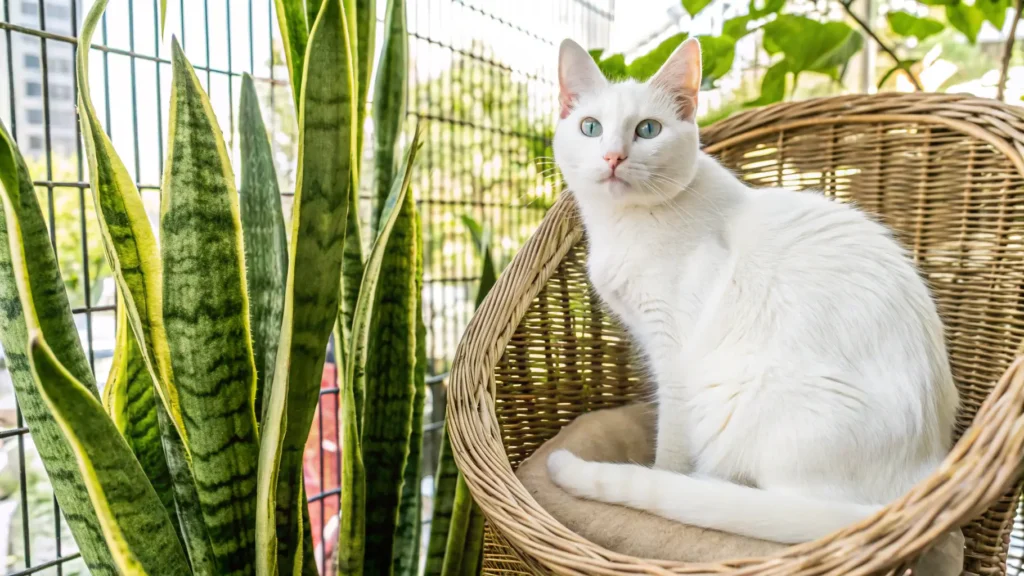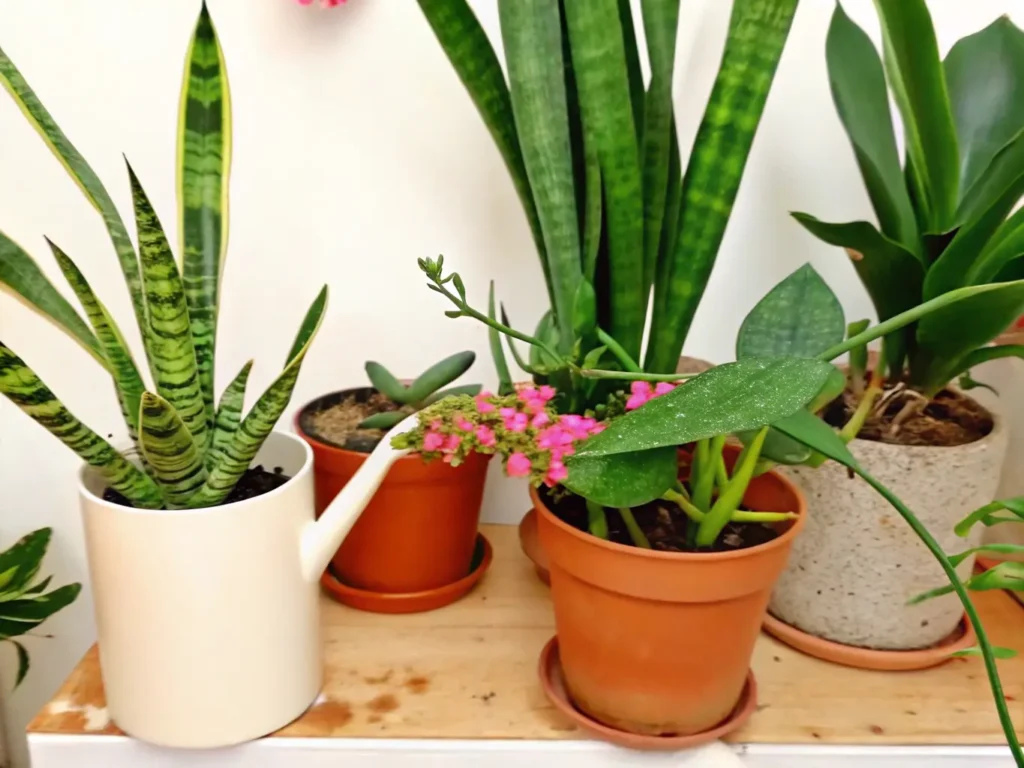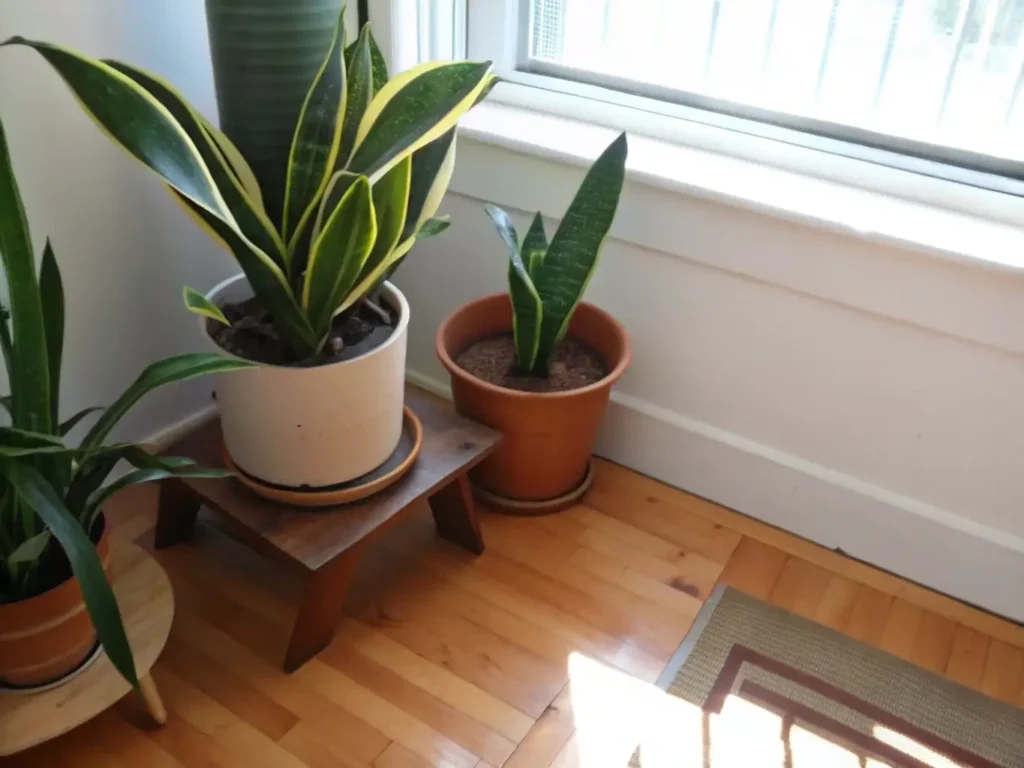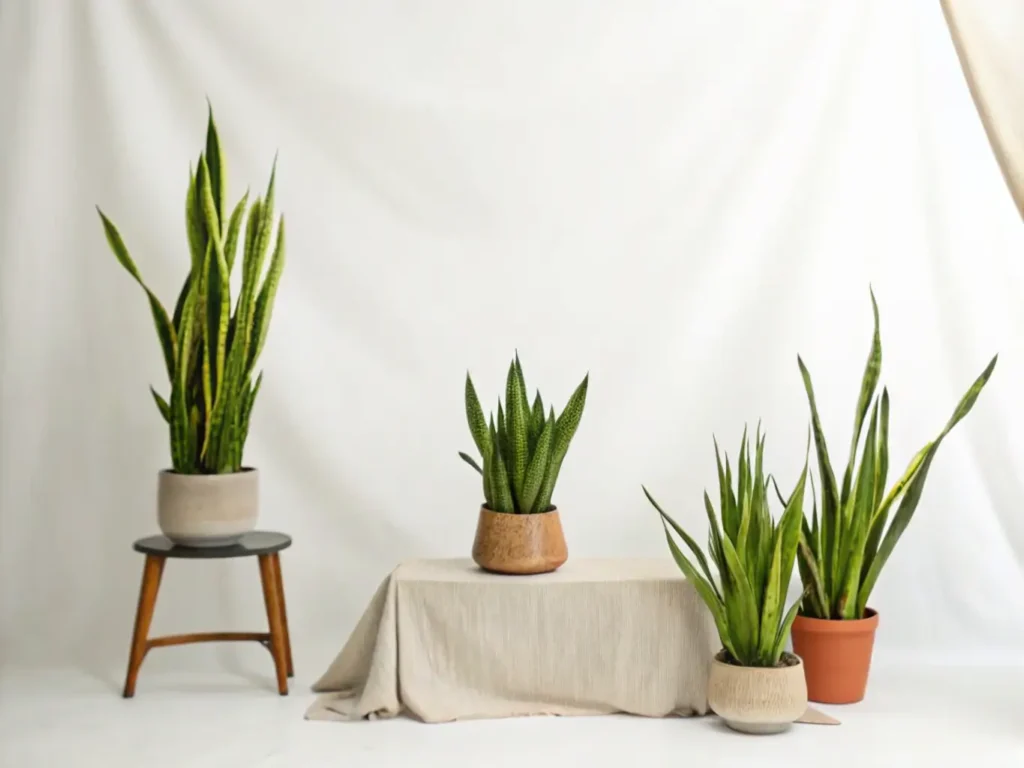
I’m a houseplant enthusiast, and one question always pops up: What is the disadvantage of snake plants? These leafy wonders are praised for their low-maintenance charm, easy adaptability, and stylish look. Yet, they’re not perfect! In this blog, I’ll share the hidden drawbacks of owning a snake plant.
Table of Contents
Quick Overview of Snake Plants
Short Intro to the Legendary Leaves
Snake plants (commonly called mother-in-law’s tongue) have tall, pointed leaves streaked with green and sometimes yellow. They look modern in minimalistic apartments or quirky in vintage living rooms. Folks trust them to tolerate low light and skip frequent watering.
But what is the disadvantage of snake plants? Even easy-care plants have quirks. While these spiky friends handle diverse indoor climates, certain factors can turn them from “amazing” to “annoying.”
Key Points in a Nutshell
- Popular for little watering needs.
- Often rumored to purify indoor air.
- Strong, upright leaves that fit many styles.
- Potential concerns for pets, watering routines, and home layouts.
- What is the disadvantage of snake plants? Let’s dive deeper.
Pet Toxicity Concerns
Keep an Eye on Those Curious Critters
I love my cat, but she’s quite the detective. Snake plants contain saponins, which can set off tummy trouble if a pet decides to sample a leaf. What is the disadvantage of snake plants? For pet owners, “toxicity” often tops the list.
- Vomiting or diarrhea can occur, although severe reactions aren’t common.
- Placement on a high shelf or in a room behind a closed door may help.
- If a pet chews plants often, you might want a safer alternative.
Personally, I used to worry whenever my cat hopped onto windowsills. Now, I place my snake plant on tall stands. Still, the risk is real, so stay alert if you share your home with furry friends.
Watering Challenges

Navigating Moisture Mayhem
Overwatering kills a lot of houseplants, but snake plants seem especially vulnerable. Their root systems rot quickly in mushy soil. That happened to me once—my poor plant sagged and turned yellow. What is the disadvantage of snake plants? Well, root rot is definitely a top contender.
- Check soil dryness by pressing your finger about an inch down.
- Choose a draining potting soil (like a cactus blend).
- Water sparingly: roughly every 2–4 weeks, depending on season and humidity.
- Watch out for cooler homes, where soil stays damp longer.
A single instance of weekly watering might lead to droopy leaves, mushy roots, and a smelly situation. Keeping a watchful eye on moisture levels helps avoid this common pitfall.
Placement Problems and Energy Beliefs
Could Sharp Leaves Harm Your Zen?
Some folks link the mother-in-law’s tongue form to negative energy. Feng shui enthusiasts worry the sharp blades symbolize conflict. Personally, I don’t strictly follow that belief, but I respect it. What is the disadvantage of snake plants? In some cultural perspectives, they could interfere with your home’s overall harmony.
- If you share your space with someone sensitive to these ideas, location matters.
- Tuck them in corners or near windows, rather than a central gathering spot.
- Large plants in small rooms can tip over if they’re not in a sturdy pot.
- Consider repotting once they grow tall to prevent top-heaviness.
Need more helpful upkeep advice? Pop over to the Snake Plant : Easy Indoor Care Guide for tips on pot size, soil choices, and overall styling.
Overreliance on Air Purifying Claims

Confronting the Hype
We’ve all heard snake plants touted as air-cleaning heroes. Yet, real-world houses differ from sealed test chambers, meaning you can’t count on a single plant to fully freshen your home. What is the disadvantage of snake plants? Believing they alone replace proper ventilation can be misleading.
- They may filter trace toxins like formaldehyde or benzene, but at modest levels.
- Try opening windows, using fans, and dusting surfaces for genuine air improvement.
- As stated by U.S. Environmental Protection Agency, no single strategy resolves indoor air. A blend of ventilation and cleaning works best.
- Don’t rely solely on snake plants for big health boosts.
I’ve placed snake plants in my bedroom. Though it feels fresher, I realize it’s more of a gentle perk than a total solution. Keep your perspective realistic for the best results.
Potential Allergy Triggers
Sometimes a Sneeze in Disguise
Turns out, even “safe” houseplants can stir up mild allergies. A pal of mine got itchy hands every time he wiped down his snake plant’s leaves. Possibly the sap or dust triggered sneezing fits. What is the disadvantage of snake plants? They might cause annoyance for sensitive folks.
- Look for runny noses, sneezing, or redness while handling the plant.
- Wear gloves or use a damp cloth to remove dust.
- If allergies persist, you might move the snake plant to a less-frequented zone.
- Watch for any breathing difficulties—safety first.
Thankfully, most individuals have zero trouble with them. Still, knowing your body’s response is crucial if you’re prone to respiratory issues.
Temperature and Light Limitations
Not Invincible in Extreme Conditions
Snake plants handle dim corners, but no plant truly flourishes in total darkness. Also, big temperature swings like chilly drafts or intense heat can harm their leaves. So, what is the disadvantage of snake plants? They’re not unstoppable despite their tough reputation.
- In winter, keep them away from drafty windows or doors.
- If leaves droop or turn brown at the edges, the spot might be too cold.
- A bit of bright, indirect light helps them maintain color and growth.
- Complete shade might slow their development and dull those stripes.
Don’t let the hype fool you into ignoring basic care, like stable temperatures and some level of daily light.
Limited Variety of Looks

Craving More Colorful Flair?
Most snake plants share a tall, spiky form with banded leaves. While you’ll find variations like Moonshine or Laurentii, many still look rather alike. What is the disadvantage of snake plants? If you’re after explosive color, you won’t find it here.
- If you love pinks, reds, or patterned leaves, a snake plant won’t deliver.
- Their vibe is more sculptural and modern than “rainbow jungle.”
- Combine them with pothos or calatheas for variety.
- A lonely Sansevieria can feel plain if you prefer bold, vibrant interiors.
I like the minimalistic style, but some friends describe them as “stiff soldiers.” Your tastes may vary, of course.
Personal Stories and a Reality Check
My Journey with Snake Plants
I’ve raised snake plants for ages, typically with success. Still, I faced hiccups:
- Overwatering: Weekly watering once led to a soggy, brown mess.
- Pet Trouble: My cat nibbled a leaf, causing minor drooling.
- Draft Issues: Cold AC turned tips brown and droopy.
What is the disadvantage of snake plants? They’re fairly tough but not unbreakable. People who treat them like immortal plants might be in for a rude awakening. Even a flexible houseplant has limits if you forget basic precautions.
Practical Tips to Handle the Downsides
Keeping Problems in Check
Below are small tricks I’ve learned over time to address what is the disadvantage of snake plants? head-on:
- High Shelves or Stands
- Keeps the plant out of pets’ reach.
- Reduces nibbling risks.
- Minimal Water Strategy
- Wait for at least an inch of soil to dry.
- Stick to a once- or twice-a-month schedule, depending on moisture levels.
- Prep for Winter
- Move the pot away from drafty windows or doors, especially if temps drop fast.
- Aim for moderate indoor climates.
- Dust Control
- Wear gloves if you’re prone to allergy flare-ups.
- Use a soft cloth to wipe leaves gently.
- Decor Combo
- Pair with other indoor gardening favorites for color and variety.
- Use bright pots to offset the plant’s neutral vibe.
Managing these areas can help you enjoy snake plants without major headaches, proving that what is the disadvantage of snake plants? doesn’t have to end your love for these hardy greens.
Final Thoughts and Takeaways
Summarizing the Negatives
Snake plants are often called a “no-fuss” choice, but they do pack potential drawbacks:
- Pet toxicity (mild yet real).
- Root rot risk from too-frequent watering.
- Possible allergic triggers for certain people.
- Minimal air-purifying impact if used alone.
- Limited aesthetic variety for color-lovers.
Even so, they remain popular because of their resilience, sleek look, and ease. What is the disadvantage of snake plants? Plenty, if you ignore these concerns. However, a bit of care and thought can make them a welcome addition to your home.
Conclusion
So there it is—a balanced snapshot. Snake plants work great for busy folks seeking green vibes without constant watering. But what is the disadvantage of snake plants? Remember potential toxicity, watering pitfalls, alignment with personal beliefs, and limited color variety. Next time someone wonders about these spiky houseplants, you’ll know the answer: be cautious with pets, don’t drown the roots, and embrace realistic expectations. If you manage these points, a snake plant can still brighten your living space—just keep an eye on those drawbacks!
